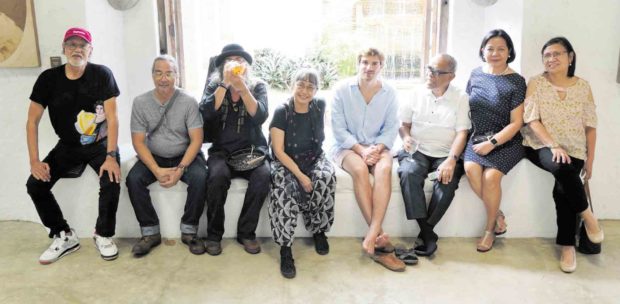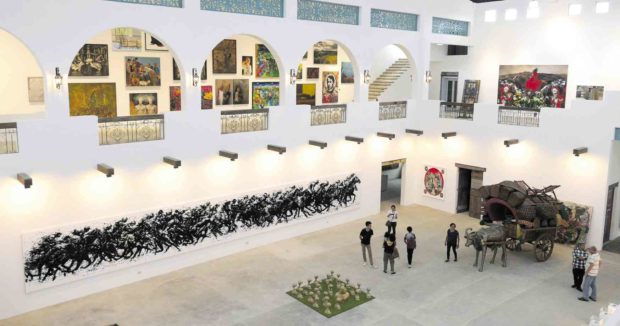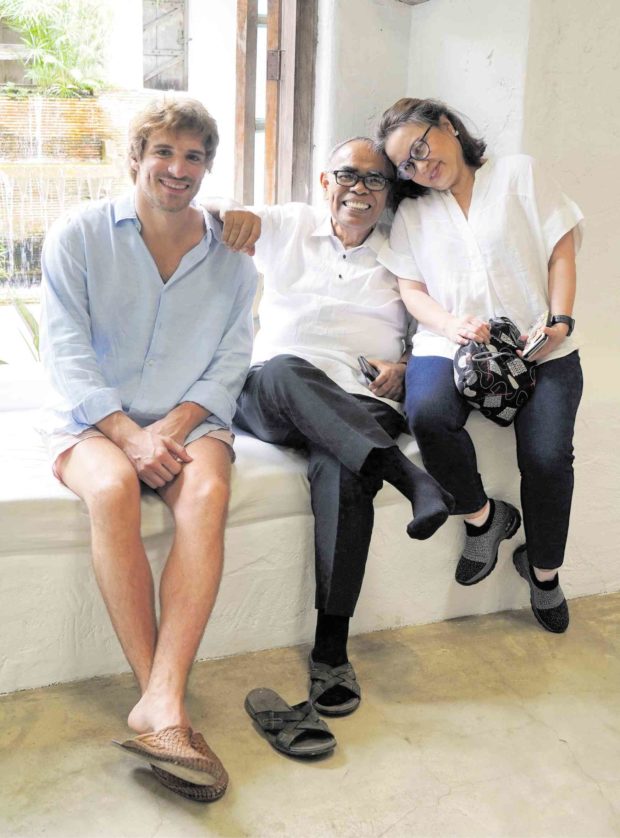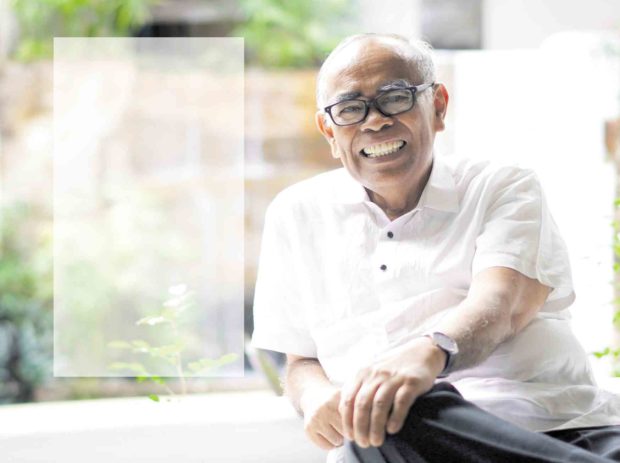“Chronologically, I’m 80, but I’m really just 22 years old,” says Dr. Joven Cuanang, eminent neurologist, art collector and patron, and proud son of Ilocos Norte.
“Maybe that’s why my name is ‘Joven,’” he quips, laughing. “Forever young.”
The doctor’s remarks refer to a major turning point in his life in 1997, when he suffered a heart attack.
“I was operated on and almost died at age 57,” he recalls. “Quadruple bypass. That was very physical. I thought, ‘You’re going to die! What I had studied in medical school was going to happen to me!’”

The surgery went well, however, and he came out better than new, resolved never to take anything for granted again.
He recalls: “I said to myself, ‘My God! This is another chance!’”
If living well is the best revenge, he has been doing so—with a vengeance—since then.
He says: “I contemplate the beauty of things and I say, ‘Ang ganda pala ng buhay.’ I look forward, always—there’s so much more to explore. The enigma. Maybe there are more surprises in store for me.”

Dec. 31, the last day of 2019, happens to be his birthday.
Since early morning, “Manong” has been receiving well-wishers at the Pintô Art Museum, the sprawling 1.5-ha complex in Antipolo that, over the last three decades, he has built as his Xanadu: two museums, seven galleries to date, a school for the arts, a café, plazas, pavilions and pleasure gardens, a lush arboretum that he planted himself, and art wherever the eye turns.
The host has laid out a splendid Ilocano feast with every kind of Northern-style longaniza you can imagine, seven lechon—and there’s even an Ilocos empanada stand.
Visitors
Among the visitors we recognize is National Artist and friend of long standing BenCab, who’s made the trek from his own art museum in Baguio with partner Annie Sarthou just for the occasion.
We also see sculptor Agnes Arellano and Billy Bonnevie, her sister Dr. Honey Carandang with her family, ceramic artist Lanelle Abueva, and businesswoman Josie Natori with husband Ken.
Throughout the day, artists, many of whom got their start at Pintô, pop in to wish the doctor well: Ferdie Montemayor, Mark Justiniani and Joy Mallari who were there at the beginning, the ubiquitous Romeo Lee, Sandra Fabie-Gfeller, Katya Guerrero and At Maculangan are just some that we recognize.

“I think Dr. Cuanang has the finest collection of Philippine contemporary art in the country,” BenCab says. Being an avid collector himself, he ought to know.
Among the exhibits in seven galleries, we note several pieces which were highlights of recent Art Fairs, among them Montemayor’s epic mural of race horses, and Nilo Ilarde’s unforgettable tongue-in-cheek installation consisting of 22,226 die-cast cars.
Medical practice
“I was never into collecting art before, except for one or two pieces by BenCab which I would buy on installment, because BenCab is a dear friend,” says Cuanang.
In fact, for the first half of his life, his primary focus was on his medical practice.
A graduate of the University of the East-Ramon Magsaysay Memorial Medical Center (UERMMMC) and Harvard medical school, he was regarded as one of the top three or four neurologists in the country. He went on to teach at UERMMMC, eventually becoming dean, and until his retirement a few years ago, served as medical director at St. Luke’s.
Being a student of the brain, however, he always knew that there was something beyond the nervous system, beyond mere brain chemistry and the firing of the synapses, something more that defined us as human beings.

“The true human being must be composed of mind, body and soul,” he says. “That crystallized in my mind in medical school. I can see why a lot of people don’t see it because the dichotomy [between the sciences and the humanities] has been ingrained in people’s minds. I guess I understand it a little more because of developments in the neurosciences. Now people talk about spirituality, art, literature, music, dance—everything that is important to the development of the human being also keeps you well.”
Neuroesthetics
It’s all one—appreciating art has made him a better physician, and a scientific outlook has opened his mind to the endless possibilities of life. He has found a convergence in the emerging science of neuroesthetics—the study of how beauty affects the brain and consequently our well-being.
“That’s what I want to promote—the totality of the person,” he says. “To come up with a developed citizenry, education is very important. And part of education for me are the humanities.”
The property on which the Pintô museum and gallery complex now stands actually began as Cuanang’s weekend retreat, a quick getaway from the stresses of his busy medical practice.
‘Salingpusa’
Sometime in the mid-1980s, he met a group of struggling artists, most of them graduates of the University of the Philippines College of Fine Arts, caught up in the Catch-22 of the contemporary gallery scene. You couldn’t get your work shown if you were unknown, and you couldn’t get known until you got your work shown.

“If you remember, after Edsa, [President] Cory Aquino said, ‘Art and culture is not my priority,’” recalls Cuanang. “I said, ‘Why not?’ Art is a very important part of our lives! John Santos, Elmer Borlongan, Mark Justiniani—when I saw their work… ang gagaling nila! How could they get started when the established galleries thought they were not ‘marketable’?”
He decided to turn his rest house into a kind of salon des refuses. Every Sunday, he would hold al fresco garden parties, where he would invite art lovers to view the works of these young artists, who by then were calling themselves “Salingpusa.”
Since there were no galleries then, they hung their paintings from clotheslines. Borlongan recalls a mad scramble by the artists every time it rained to keep the paintings from getting wet.
Pintô
Eventually, Cuanang built a proper gallery, with a roof. He called it Pintô, Tagalog for “door,” because he wanted it to be an open door “to welcome more artists and art forms, a door for people to open their minds and hearts to the condition we are in, a door to new possibilities, new directions, a door to reach out to the world, a door for everyone to come in!”
It has since been a continuous growth and evolution.
Everyone did come in. Today the Pintô Art Museum is a favorite destination for weekenders and travelers who come for the food and the ambience as much as for the art.
It has also reached out to the world, through Pintô International, a project Cuanang began with fellow neurologist and art lover Luca Parolari, from Florence, Italy.
A nonprofit venture, Pintô International serves as a platform for Filipino artists to get their work exhibited abroad. It has established a permanent exhibition space in the Manhattan borough of New York City.
Last year it held an exhibit in Tokyo, and sometime in May this year Pintô International will hold another in Madrid.
These exhibits share the same curatorial outlook as the Pintô Art Museum—to provide a platform for younger, less-established Filipino artists to show their works.
Now that the Salingpusa artists that Cuanang nurtured and supported are among the leading lights of the contemporary Filipino art scene, Pintô has kept its doors open to succeeding generations of mavericks.
It’s a unique philosophy, since by and large, most of the galleries showing contemporary work still operate through a kind of meritocracy, where an artist has to first develop a “buzz” before they can get wall space for their works.
Many so-called collectors are actually speculators betting on whether a particular artist’s work will appreciate in value over time.
In contrast, “Manong” still buys art based on how it speaks to him, whether he can connect to the work in a deep and meaningful way, regardless of buzz, hype or price tag.

“[Pintô] is also operated as a nonprofit,” says Cuanang. “It’s all for the development of the people who work here. Our main interest is to see that the artists are dealt with fairly.”
Outstanding Filipino
Just before Congress went on its Christmas break, the House of Representatives passed a resolution honoring Cuanang on the occasion of his 80th birthday as an “outstanding and exemplary” Filipino whose work as a physician, art patron and humanitarian has contributed significantly to nation-building.
“I would like to work with Congress to come up with legislation that will help our artists,” he says.
Among other things, he thinks artists should receive a percentage from the resale of their works in secondary markets, such as art auctions.
Another problem he sees is overproduction.
“I don’t like the situation in some galleries where they treat artists as if they were employees,” he adds. “There’s too much pressure from these galleries for the artists to create for the sake of commerce. Nawawala na ang originality. I feel philosophically that artists should be free to create.”
The recognition is appreciated, he says, but following his passion has been its own reward.
“In the end, when we give something and don’t think about it anymore, it comes back to me in another way,” says Cuanang. “That other way is being happy.”
It’s all about one’s attitude toward life.
“I heal myself listening to music, meditating in the morning, looking at art,” he says. “What I am going to do that day is defined by how I feel and what I think about the morning that I wake up. Art is totally enriching.”














































